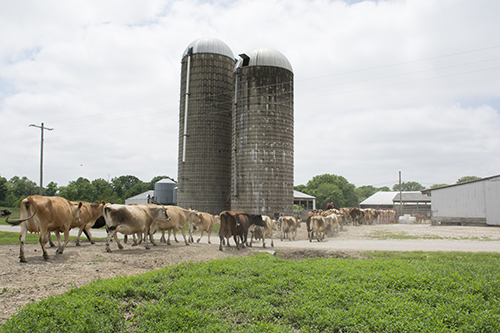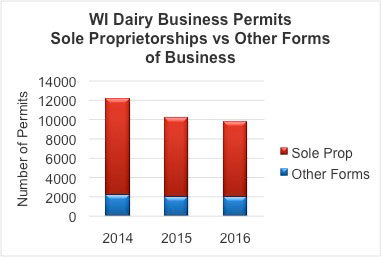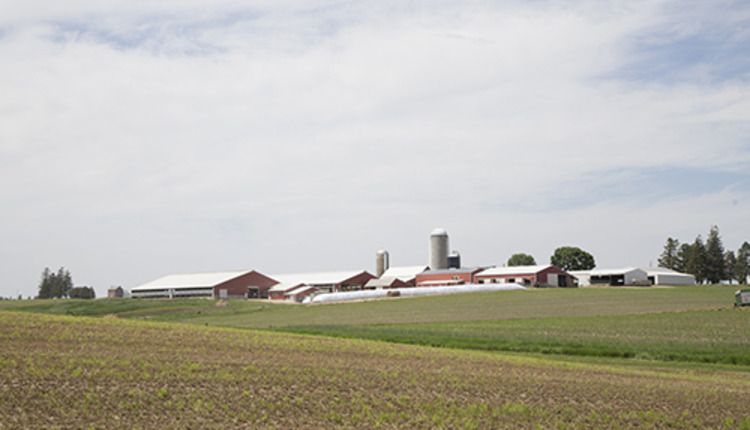
The authors are a faculty associate at the University of Wisconsin-Madison and a farm management specialist at the University of Wisconsin-River Falls, respectively. Both are with the UW Center for Dairy Profitability.
As dairy farms are getting fewer in number and larger in size, their structure is also becoming more complex but at the same time remain family centered. The number of dairy farms in the U.S. dropped to 45,000 in 2012, according to USDA. In Wisconsin, the number of dairy farms fell below 10,000 last year. This consolidation process brought ownership, management, and estate planning challenges that have encouraged many to adopt new ownership structures.
Until the early 2000s, sole proprietorships were the default and by far the most common way to conduct dairy business. Since 2003, the number of dairies operating as non-sole proprietorships has more than tripled in Wisconsin. And the trend has accelerated in recent years.

In the 1980s, many Western states began passing statutes to allow creating a type of entity known as limited liability corporations (LLPs and LLCs). The two primary advantages of LLPs or LLCs are personal liability protection and the simplicity of asset ownership sharing and transfer. Limited liability corporations and partnerships shield personal assets of the owners from risk from business creditors. In addition, shares in LLCs or LLPs can be transferred more gradually between member owners, facilitating the farm transfer processes. LLPs and LLCs also offer the possibility to separate different farm enterprises and assets, which can be advantageous for fiscal planning purposes.
In Wisconsin, while the total number of dairy farms fell by 24 percent between 2014 and 2016, the number of non-sole proprietorships only dropped by 4 percent. That shift caused LLCs and LLPs to go from representing 18 percent to 20 percent of dairy farms from 2014 to 2016 alone.
Despite the more complex ownership structures, most farms are still controlled by a single operator or family. According to USDA data, only 1.4 percent of U.S. dairy farms were classified as nonfamily farms in 2014, and those businesses generated about 6 percent of the production.
Although LLCs and LLPs still represent a small portion of the dairy farms population, complex farm ownership structures are likely to gain ground among dairy farms. The advantages those structures provide in terms of financial and fiscal management will likely prompt more farmers to adopt them. The narrowing profit margins and financial hardships that are currently afflicting dairy farmers may contribute to this trend, as well.
(c) Hoard's Dairyman Intel 2016
May 2, 2016






